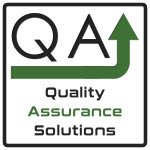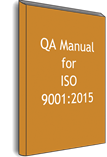What is an Operational Definition?
An operational definition (OD) gives communicable meaning to a concept by specifying how the concept is measured and applied within a particular set of circumstances.
This statement highlights two important things about an operational definition
- It describes a precise meaning to the spoken or written word, forming a "common language" between two or more people.
- It defines how a word or phrase is used when it is applied in a specific context.
Words mean different things when used in different situations. For example, the definition of "ready" used in an air squadron would be very different from the one applied in a naval hospital.
Strictly speaking, ODs arent "tools" such as Affinity Diagrams, Flowcharts, Pareto Charts, and Histograms. However, they provide the vital underpinning that helps us use these other tools successfully.
Your ISO 9001:2015 Kit includes Templates, QA Manual, Implementation Guide and a Gap Assessment Internal Audit Tool for ISO 9001:2015
Why Should a Team use Operational Definition
OD places workable meaning into our process improvement terminology. Words such as "good," "reliable," "defect," and "uniform" have many meanings unless they are defined in specific terms that apply in particular circumstances.
As an example, in the absence of an OD, the term "squared away" might mean one thing to an Executive Officer immediately prior to the visit of a VIP, and quite another to a young sailor involved in preparing for the visit but anxious to start a three-day weekend. However, if "squared away" were operationally defined with specific details to all involved in getting the ship ready for the VIP, the term would mean the same thing to the exec and the sailor.
To communicate effectively and avoid misinterpretations, members of your team, data collectors, both internal and external customers and suppliers must use the same OD for the same concepts. To best accomplish this, document the term and verbally quiz all pertinent people on the term's definition.
With regards to improvement, a review of the data collection module assures everyone works from a common set of definitions. Misunderstandings waste time; but worse, they add variation to your process.
- QAS Home
- The Basics
- What is an Operational Definition
|
Quality Assurance Solutions Robert Broughton (805) 419-3344 USA |
 |
|
Software, Videos, Manuals, On-Line Certifications | ||
|
An Organizational Task Management System. Projects, Meetings, Audits & more | ||
|
Corrective Action Software | ||
|
Plan and Track Training | ||
|
AQL Inspection Software |
|
450+ Editable Slides with support links | ||
|
Learn and Train TRIZ | ||
|
Editable Template | ||
|
Templates, Guides, QA Manual, Audit Checklists | ||
|
EMS Manual, Procedures, Forms, Examples, Audits, Videos | ||
|
On-Line Accredited Certifications Six Sigma, Risk Management, SCRUM | ||
|
Software, Videos, Manuals, On-Line Certifications |




































